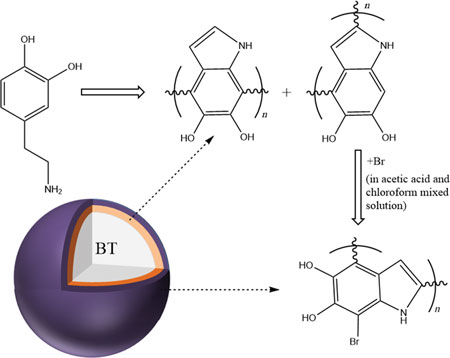Article contents
Enhancement of dielectric properties with the addition of bromine and dopamine modified barium titanate particles to silicone rubber
Published online by Cambridge University Press: 07 November 2016
Abstract

Dual-coated barium titanate (BT) particles were prepared using dopamine (DP) in conjunction with bromine (Br) in order to enhance the dielectric constant of silicone rubber (SR) composites containing evenly distributed BT particles. The results showed that both DP and Br were deposited on the BT particles. The dielectric constant of the SR/BT composite was significantly increased from 3.6 to 4.7 at 1 kHz with the addition of BT modified with dopamine (DP–BT). Moreover, the dielectric constant further rose to 4.9 at 1 kHz when the DP–BT particle was grafted with bromine (Br–DP–BT).
- Type
- Research Letters
- Information
- Copyright
- Copyright © Materials Research Society 2016
References
- 6
- Cited by





